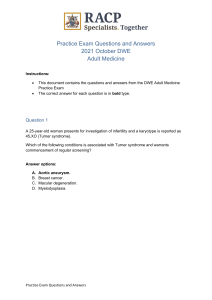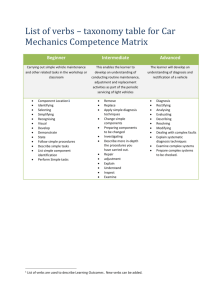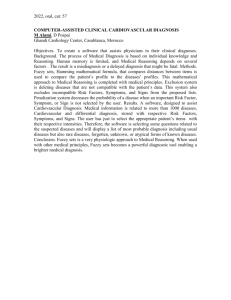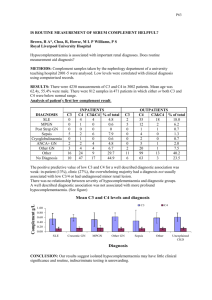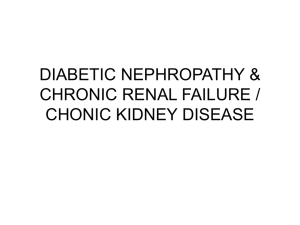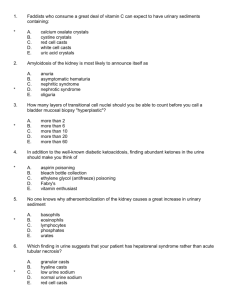P60 HISTOPATHOLOGICAL DIAGNOSES IN PATIENTS
advertisement
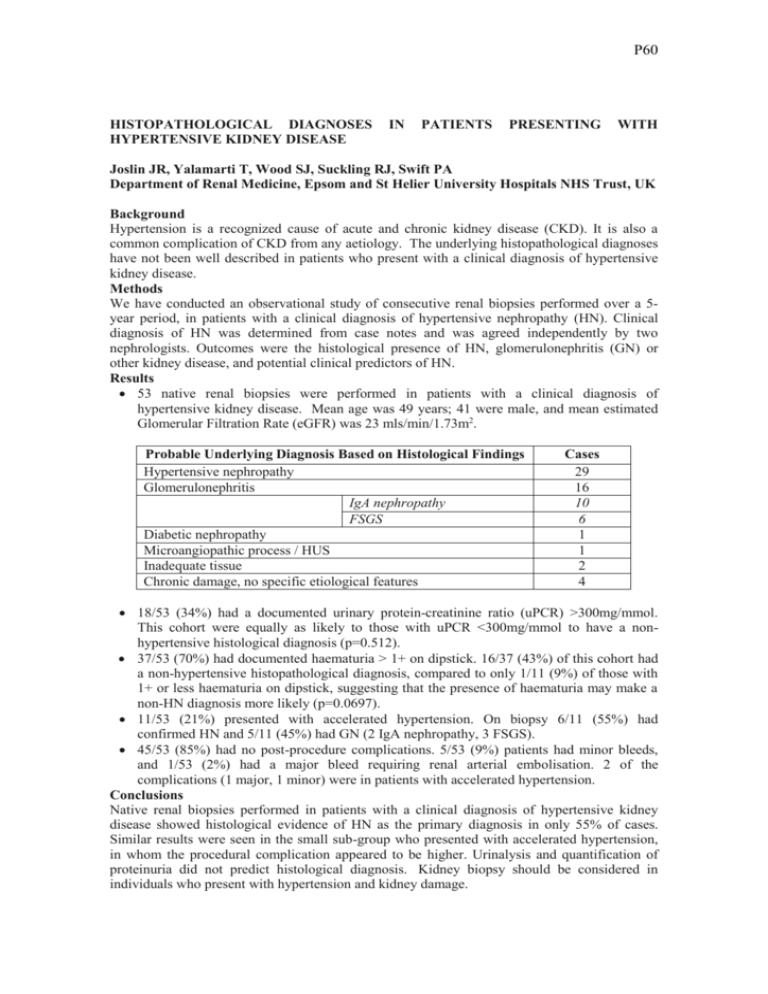
P60 HISTOPATHOLOGICAL DIAGNOSES HYPERTENSIVE KIDNEY DISEASE IN PATIENTS PRESENTING WITH Joslin JR, Yalamarti T, Wood SJ, Suckling RJ, Swift PA Department of Renal Medicine, Epsom and St Helier University Hospitals NHS Trust, UK Background Hypertension is a recognized cause of acute and chronic kidney disease (CKD). It is also a common complication of CKD from any aetiology. The underlying histopathological diagnoses have not been well described in patients who present with a clinical diagnosis of hypertensive kidney disease. Methods We have conducted an observational study of consecutive renal biopsies performed over a 5year period, in patients with a clinical diagnosis of hypertensive nephropathy (HN). Clinical diagnosis of HN was determined from case notes and was agreed independently by two nephrologists. Outcomes were the histological presence of HN, glomerulonephritis (GN) or other kidney disease, and potential clinical predictors of HN. Results 53 native renal biopsies were performed in patients with a clinical diagnosis of hypertensive kidney disease. Mean age was 49 years; 41 were male, and mean estimated Glomerular Filtration Rate (eGFR) was 23 mls/min/1.73m2. Probable Underlying Diagnosis Based on Histological Findings Hypertensive nephropathy Glomerulonephritis IgA nephropathy FSGS Diabetic nephropathy Microangiopathic process / HUS Inadequate tissue Chronic damage, no specific etiological features Cases 29 16 10 6 1 1 2 4 18/53 (34%) had a documented urinary protein-creatinine ratio (uPCR) >300mg/mmol. This cohort were equally as likely to those with uPCR <300mg/mmol to have a nonhypertensive histological diagnosis (p=0.512). 37/53 (70%) had documented haematuria > 1+ on dipstick. 16/37 (43%) of this cohort had a non-hypertensive histopathological diagnosis, compared to only 1/11 (9%) of those with 1+ or less haematuria on dipstick, suggesting that the presence of haematuria may make a non-HN diagnosis more likely (p=0.0697). 11/53 (21%) presented with accelerated hypertension. On biopsy 6/11 (55%) had confirmed HN and 5/11 (45%) had GN (2 IgA nephropathy, 3 FSGS). 45/53 (85%) had no post-procedure complications. 5/53 (9%) patients had minor bleeds, and 1/53 (2%) had a major bleed requiring renal arterial embolisation. 2 of the complications (1 major, 1 minor) were in patients with accelerated hypertension. Conclusions Native renal biopsies performed in patients with a clinical diagnosis of hypertensive kidney disease showed histological evidence of HN as the primary diagnosis in only 55% of cases. Similar results were seen in the small sub-group who presented with accelerated hypertension, in whom the procedural complication appeared to be higher. Urinalysis and quantification of proteinuria did not predict histological diagnosis. Kidney biopsy should be considered in individuals who present with hypertension and kidney damage.
